The Visual Guide to
Ovine Reproduction
- Prolapsed Vagina
- Hydrops Allantois
- Mummification
- Maceration
- Ruptured Prepubic Tendon
- Abdominal Hernia
- Pregnancy Ketosis
- Prolonged Gestation
- Uterine Torsion
Accidents of Gestation: Prolonged Gestation
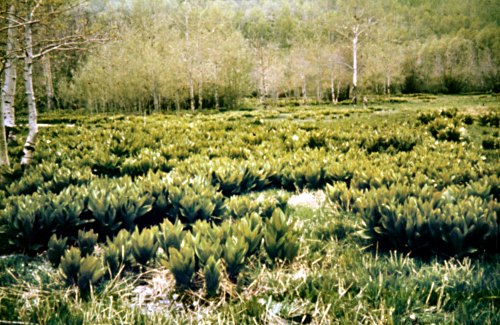
Veratrum californicum - Early Growth.
Early Spring growth of Veratrum californicum (Skunk cabbage) on the range at 8000 foot elevation in Idaho.
Drost M (1967)
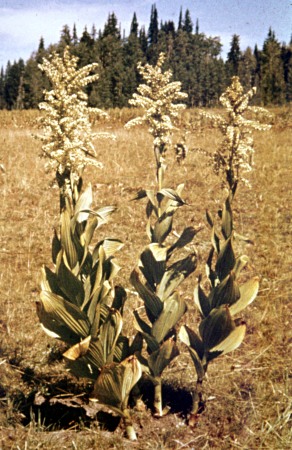
Veratrum californicum - Mature Plants.
Mature Veratrum californicum plants on the range. Sheep are not likely to consume these plants at this stage of development.
Drost M (1967)
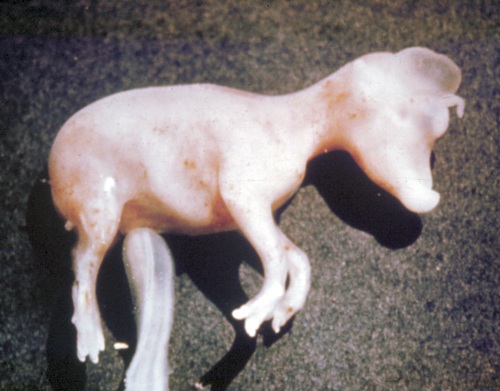
External hydrocephalus.
This 53-day old fetus shows external hydrocephalus. The ewe was fed Veratrum californicum on Day 14 of pregnancy. The brain and skull of this early fetus were affected by cyclopamine from the young Veratrum californicum plant.
Binns W (1967)
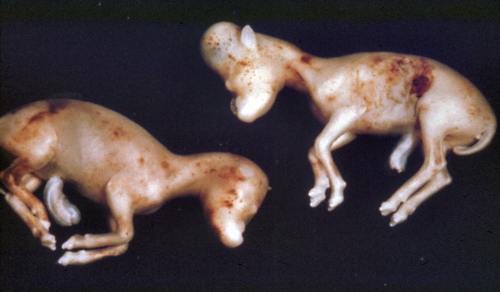
Normal versus Abnormal Fetus.
Deformed skull in a 55-day fetus (on the right) of a ewe fed Veratrum californicum around Day 14 of gestation, compared with a normal 55-day fetus.
Drost M (1967)
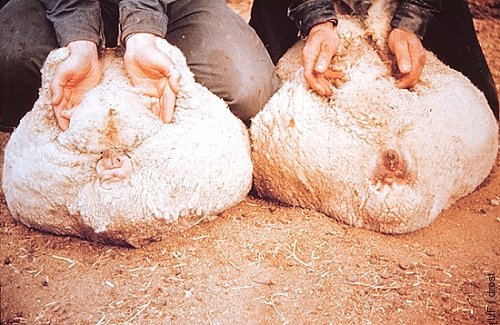
Failure to Initiate Parturition.
Both ewes are near term. The ewe on the left show normal mammary development and enlargement of the vulva in preparation for labor and parturition. The ewe on the right carrying a deformed fetus did not receive the fetal signal to initiate parturition.
Drost M (1967)
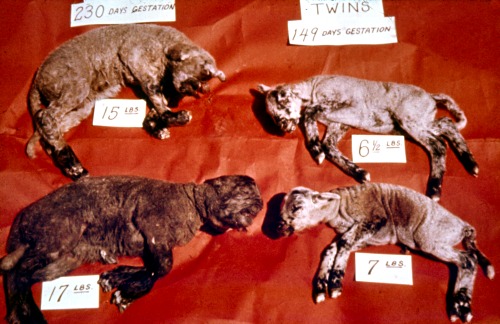
Overdue Fetuses.
Comparison of two sets of twins. A normal set of twin lambs is shown at the right. A set of postmature lambs with deformed skulls and brains is shown at the left. The affected fetuses continued to grow in utero but failed to initiate parturition due to a nonfunctional hypophysis, hence a failure to release ACTH. Consequently the adrenal glands did not produce cortisol to initiate parturition.
Drost M (1967)
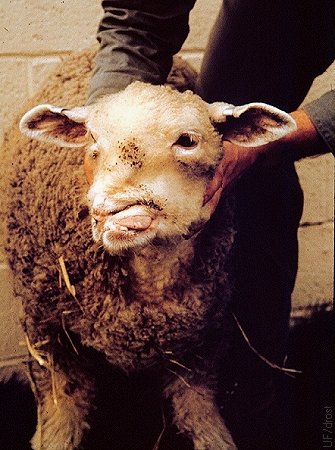
Deformed Yearling Lamb.
Cranial deformities due to abnormal development during the organogenesis stage, as a result of ingestion of Veratrum californicum by the dam just before or just after Day 14 of gestation. Ingestion on Day 14 would have resulted in derangement of the pituitary gland and failure by the fetus to trigger parturition at term.
Drost M (1967)
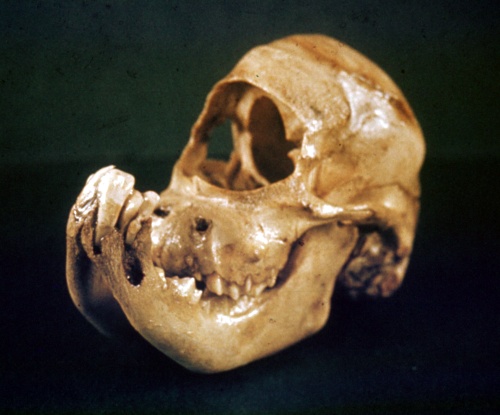
Cyclopian Skull.
Skull of a young sheep affected as an embryo by the ingestion of Veratrum californicum by its dam. The function of the hypophysis was not affected allowing the fetus to trigger its own delivery at term.
Drost M (1967)
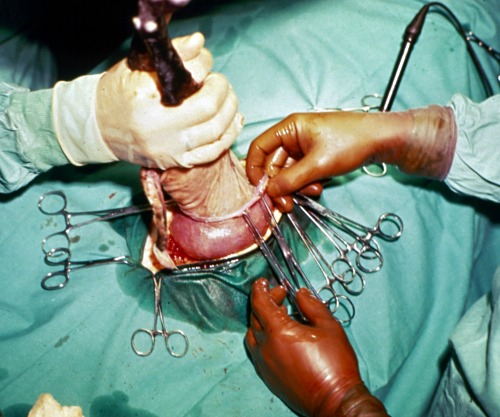
Fetal Surgery.
The fetus is positioned for adrenalectomy via the flank. The fetal membranes and edges of the uterine incision are sealed by clamping to the skin of the fetus to minimize loss of fetal fluids.
Drost M (1967)

Fetal Adrenalectomy.
Experimental bilateral fetal adrenalectomy at 120-days of gestation rendered the fetus incapable of initiating parturition. The fetus continued to grow past term until delivered by cesarean section. The fetal membranes and edges of the uterine incision were sealed by clamping to minimize loss of fetal fluids.
Drost M (1967)
